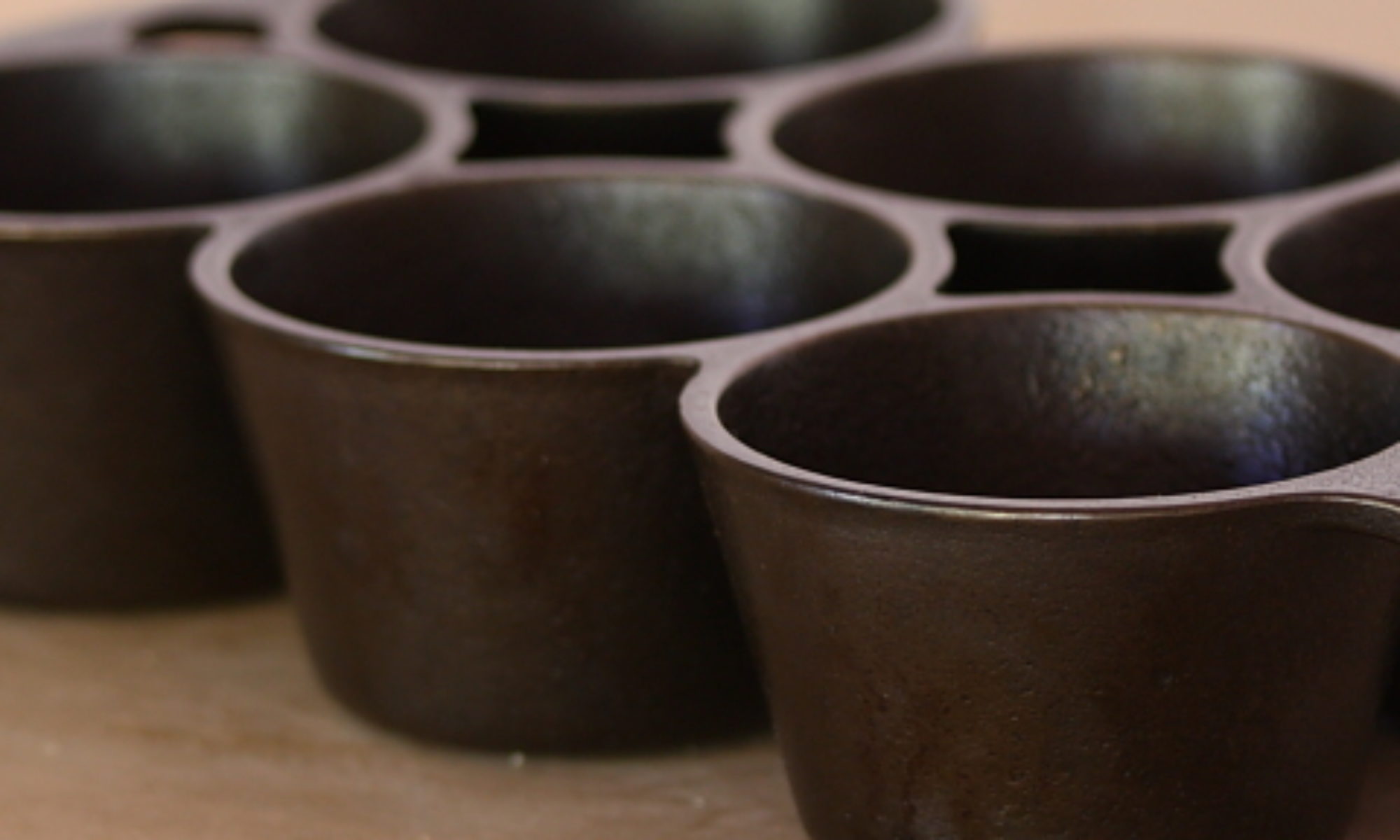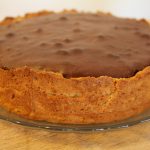As you’ve noticed, we get fresh goat cheese every other week. It’s really good cheese, but sometimes we can’t keep up with it, or we already have a number of things planned for the week — none of which uses fresh goat cheese. So, into the freezer it goes. Then one day, we realize that we have several logs of cheese just sitting there, and we’ll be getting more. What to do?
One of our favorite ways to use that excess goat cheese is for Tourteau de chèvre. It’s a light, somewhat dry, not-too-sweet cheesecake that’s pretty easy to put together, and we’ll make it once or thrice a cheese season. And, for a while, that was the plan. But, we got to thinking, plain again. Oh, I know, what suffering (you know if you’ve tried the tourteau that no suffering is involved). So, we thought, what about trying to make it a chocolate version? And, with a chocolate version, you need an almond crust. Well, you have to admit, almond does go well with chocolate. So, today and tomorrow, we’ll show you how we put it together. And, the great thing is, this really is a nice thing to put together over two days — the crust needs to chill — so you can make it at home by following along.
Let’s start by scratchin’ up an almond crust, based on the Almond Flaky Pastry Dough in Tart it Up!, by Eric Lanlard. In his version, you can tell that it’s a recipe in which the ingredients were originally specified in grams; he changed them to volume measurements, keeping more precision than needed resulting in amounts such as: 1 3/4 cup plus 1 tablespoon. We find that frustrating, so we fixed it. For those who use a scale, we’ve figured out the grams for everything that matters.
Flaky Almond Pastry Dough
Ingredients
- 3/4 cup [100g] confectioners' sugar
- 8 Tbs [1 stick] unsalted butter cold, cut into pieces
- 1/2 cup [50g] ground almonds
- 1/2 tsp vanilla extract
- 1-2 drops almond extract
- 2 medium eggs lightly beaten
- 1 3/4 cups [225g] all-purpose flour
Instructions
- Using your fingers, rub together sugar, ground almonds, butter, vanilla, and almond extract until the consistency of breadcrumbs.
- Stir in eggs.
- With the edge of a butter knife, mix in flour. Turn onto a lightly-floured work surface and shape into a ball.
- Wrap in plastic and refrigerate at least 30 minutes, or overnight.
- Excess dough can be frozen for 6 weeks.
Ingredient discussion:
Ground almonds. We didn’t have any, but that didn’t stop us; we just quick made some up, and we’ll show you how. If you already have ground almonds, great; otherwise, you can make them, too. Extracts should be pure, real extracts. No imitations. Most flavors are wonderfully complex and contain dozens, perhaps hundreds, of compounds that provide subtle nuances of flavor. And, in the case of extracts, you use so little that the difference in price per dish is insignificant. Essentially, more flavors for less than a penny or two.
Procedure in detail:
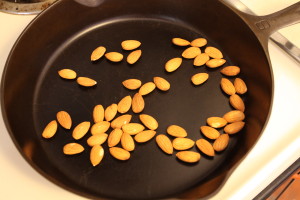
Toast almonds. Ground almonds are less dense than whole almonds, so measure out about 1/3 of a cup of whole almonds (that’s about 50g) and place them in a skillet over medium heat. Toast until fragrant and just beginning to brown in spots, about 10 minutes. Remove from heat and let cool.
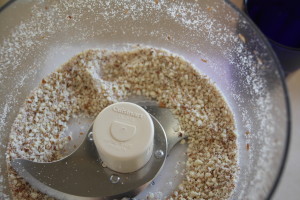
Grind almonds. Put the almonds in a food processor and pulse/run until ground, about 15 to 20 seconds. Now you have the right amount of ground almonds. Simple, huh?
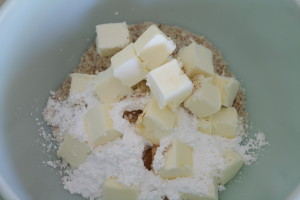
Mix sugar, almonds, flavorings, and butter. Combine all those ingredients in a bowl and rub together with your fingertips. The original instructions said that the mixture would become like breadcrumbs. Ours didn’t, as there’s too much butter and it starts to melt a bit. So, work quickly and try to get as much mixed in as possible. If you leave a few chunks of butter, that’ll be okay.
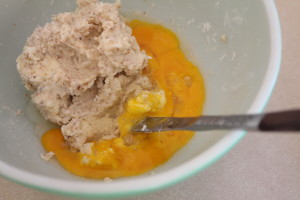
Add eggs. Again, the original instructions said the eggs should be lightly beaten before adding them to the dough. We just cracked them on the side, and lightly beat them before stirring them in. It seemed to work.
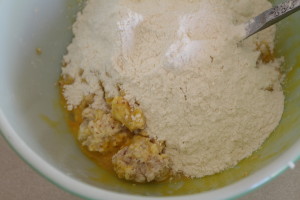
Add flour. Add the flour on top of the dough and work it in with the edge of a butter knife. This is easier than it sounds and only takes a few minutes. It gives you a chance to break up any remaining large pieces of butter, too.
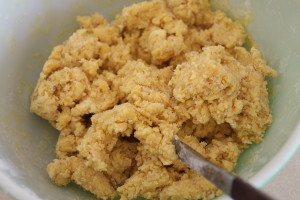
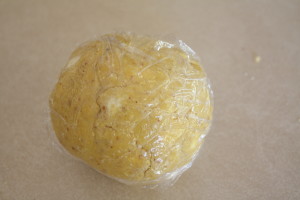
Chill. Scoop the dough up, form it into a ball and wrap in plastic. Place in the refrigerator to chill for at least 30 minutes, or until tomorrow, before rolling it out and lining a pan.
We’ll cover rolling out and the taste test review in tomorrow’s post.
